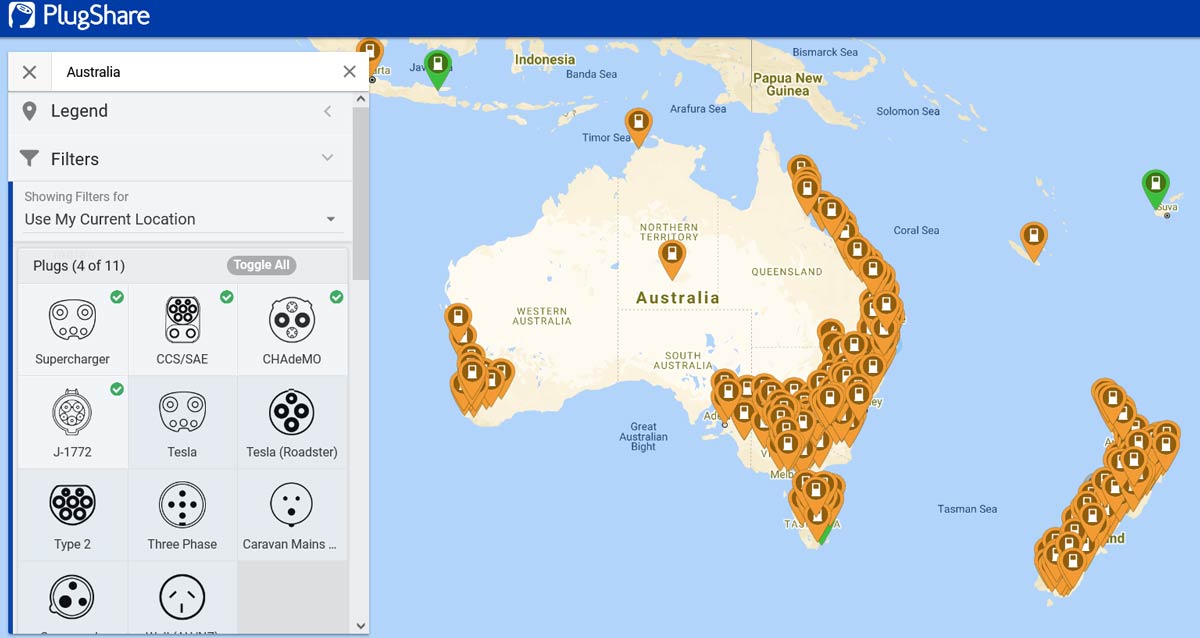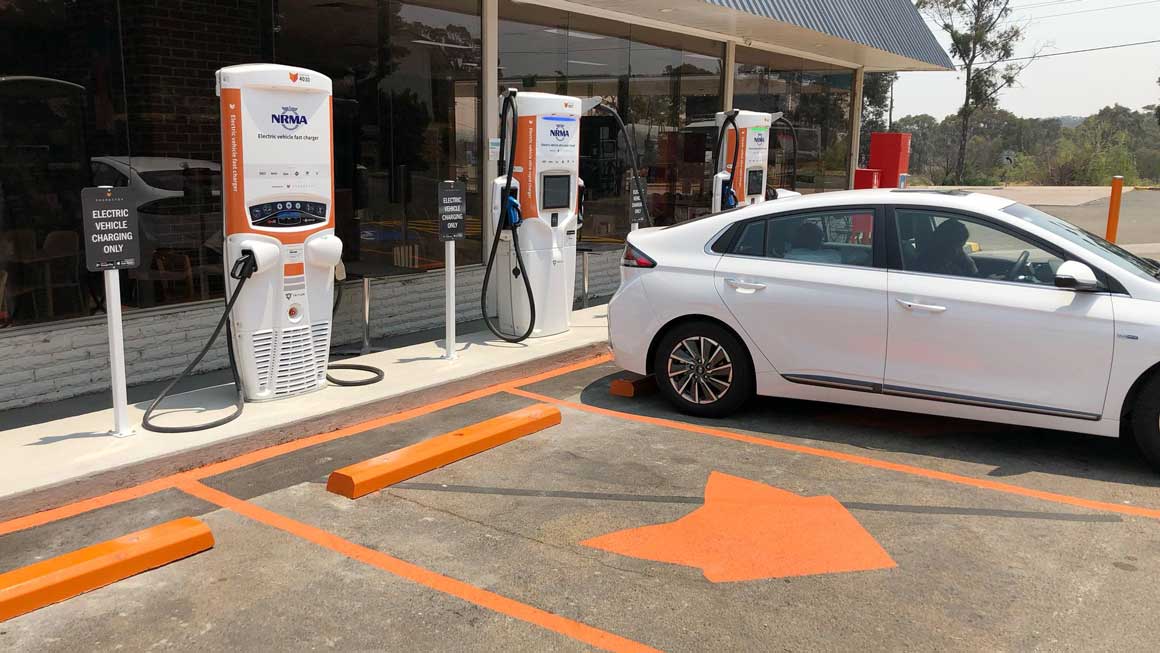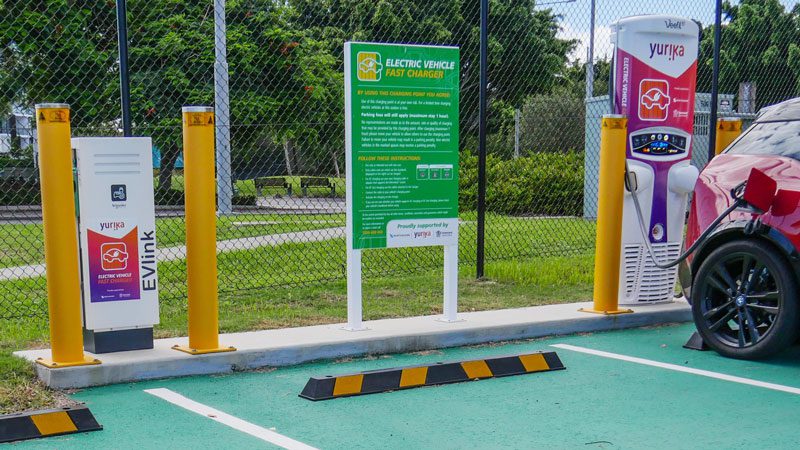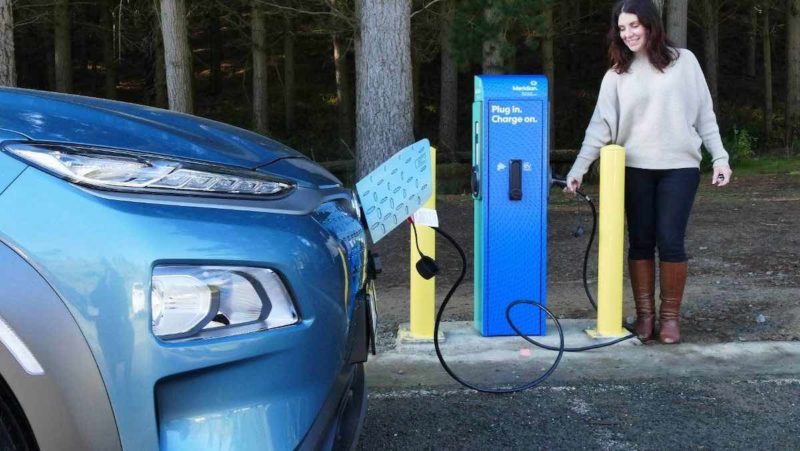Range anxiety is the term given to that niggling worry that an electric car won’t have enough battery charge to make it through the day. It’s one of the commonly noted barriers to the uptake of electric vehicles.
Those who own an electric vehicle will know that range anxiety is not that much of a problem once you understand more about EVs. And if you’re anything like this writer, you’ll have experienced real range anxiety – and price anxiety – as a poor student driving an internal combustion engine car, counting out the cents to fill the tank!
The beauty of electric cars is that while public charging infrastructure is being increasingly rolled out in key corridors and urban centres, there are already more places to charge an EV than there are to fill up a petrol or diesel car.
Hint: you just need a powerpoint.
Here are nine ways to manage your battery charge status and alleviate range anxiety:
Understand your driving range requirements
Whether you live in the city or suburbs, or in a regional area like this driver, chances are your daily driving habits are pretty regular.
The average daily commute for an Australian driver is just under 40km (ie, less than 20km one way). New electric cars are able to drive up to 200km on one charge, at a minimum, and that’s more than enough for at least 4 days of driving.
And most modern electric vehicles can drive even further, with the most popular electric car in Australia, the Tesla Model 3, able to drive around 400km before needing to charge (depending on how they are driven). Others can go further. It largely depends on the size of the battery.
What’s important to understand is how often you’re likely to need to do an unscheduled drive, especially if you’re a parent or carer. Teenagers and toddlers alike, for example, have a great aptitude for emergency trips.
Or perhaps your work requires you to be on the road at short notice. If that sounds like you, try and estimate how often you might need to take these sort of trips, determine where there are chargers you can use when out and about (plugshare.com is great for this), and how often you will able to top up your range.

Understand the difference between NEDC, WLTP and EPA range ratings
A common misconception (that also applies to ICE vehicles) is that the energy efficiency and hence “official” driving range (or fuel usage in an ICE car) is indicative of actual driving.
As with ICE cars, how much range you get is based on a number of factors, including how fast you accelerate, the speed you travel, and how many hills are on your route.
There are three range ratings, and the sticker on the window screen of an EV when you buy uses a range based on an outdated NEDC rating, which generally exagerrates the range (because the tests are done in unrealistic conditions).
There is also the more accurate WLTP standard which is used in Europe, and then there are the range ratings doled out by the US Environmental Protection Agency – you can search for these at fuelconomy.gov.
The EPA is generally the best guide to real-world driving range. You can get a full picture of the difference between the range ratings in our FAQ here.
Know your guess-o-meter
The remaining range display in your car is colloquially called a “guess-o-meter” because the car’s software makes an estimate of your remaining range based on your recent driving behaviour.
While these algorithms have greatly improved in recent times, it’s a good idea to spend your first few months of ownership keeping an eye on what it says, and how far you actually get before the battery is low.
Again, it’s a lot like watching the fuel gauge in an ICE car!
Know your charging stations
As mentioned above, it’s important to know where your local charging station are when not at home. But also, you need to know what kinds there are so you can choose the best type for any given situation.
When at home, you can plug into a standard powerpoint using the “trickle charger” that comes with your car (it can also be a good idea to purchase a power adapter with overload protection to ensure your car doesn’t trip your home’s circuit).
This will typically charge at a rate of around 2.2kW, or higher if you have a wall charger or dedicated 15/32 amp socket, or even three-phase power.

Public charging stations are either AC or DC, with the latter being the fastest type of charging available. AC chargers are commonly called destination chargers, and you would typically find them at shopping centres, retaurants and hotels, or workplaces, and you park your car there for at least an hour or two to top up while at work or shopping or eating.
DC fast chargers will charge your car from 0-80% in anything from 20 minutes to an hour depending on the size of your battery and what your vehicle’s top charge rate is. Most fast chargers in Australia are 50kW or 350kW.
Top up wherever and whenever you can
Going to the shops? Opt for the shopping centre you know has a destination charger. Going on a road trip? Book the motel with a destination charger, or call ahead to ask if you can plug your EV in (and offer to pay for the electricity you use!).
Home for the day or night? Plug the EV in and leave it on for a maximum charge (generally to 80%, but 100% if you own a Shanghai-made Tesla with LFP battery).

Turn off the air-con and other auxiliary drains
There is always the potential you get stuck on a longer trip and risk a low battery status. In cases like these, switch off the air-con, music and any other energy drains that may eat into your charge.
Drive more conservatively
This is for the leadfoots (and I confess to being one of them at times!). Accelerating and driving more slowly – again, as with an ICE car – will result in using less energy per kilometre.
Choose a different route
If you have the choice of a route with hills, and a route without, choose the one without if the distance is similar. Many EVs also have a feature that allows it to predict a navigation route that uses less energy.
Make sure your tyre pressure is optimal
If your tyres are a little deflated you will use more energy. Check the air pressure regularly, and fill to manufacturer recommendations.

Bridie Schmidt is associate editor for The Driven, sister site of Renew Economy. She has been writing about electric vehicles since 2018, and has a keen interest in the role that zero-emissions transport has to play in sustainability. She has participated in podcasts such as Download This Show with Marc Fennell and Shirtloads of Science with Karl Kruszelnicki and is co-organiser of the Northern Rivers Electric Vehicle Forum. Bridie also owns a Tesla Model Y and has it available for hire on evee.com.au.

